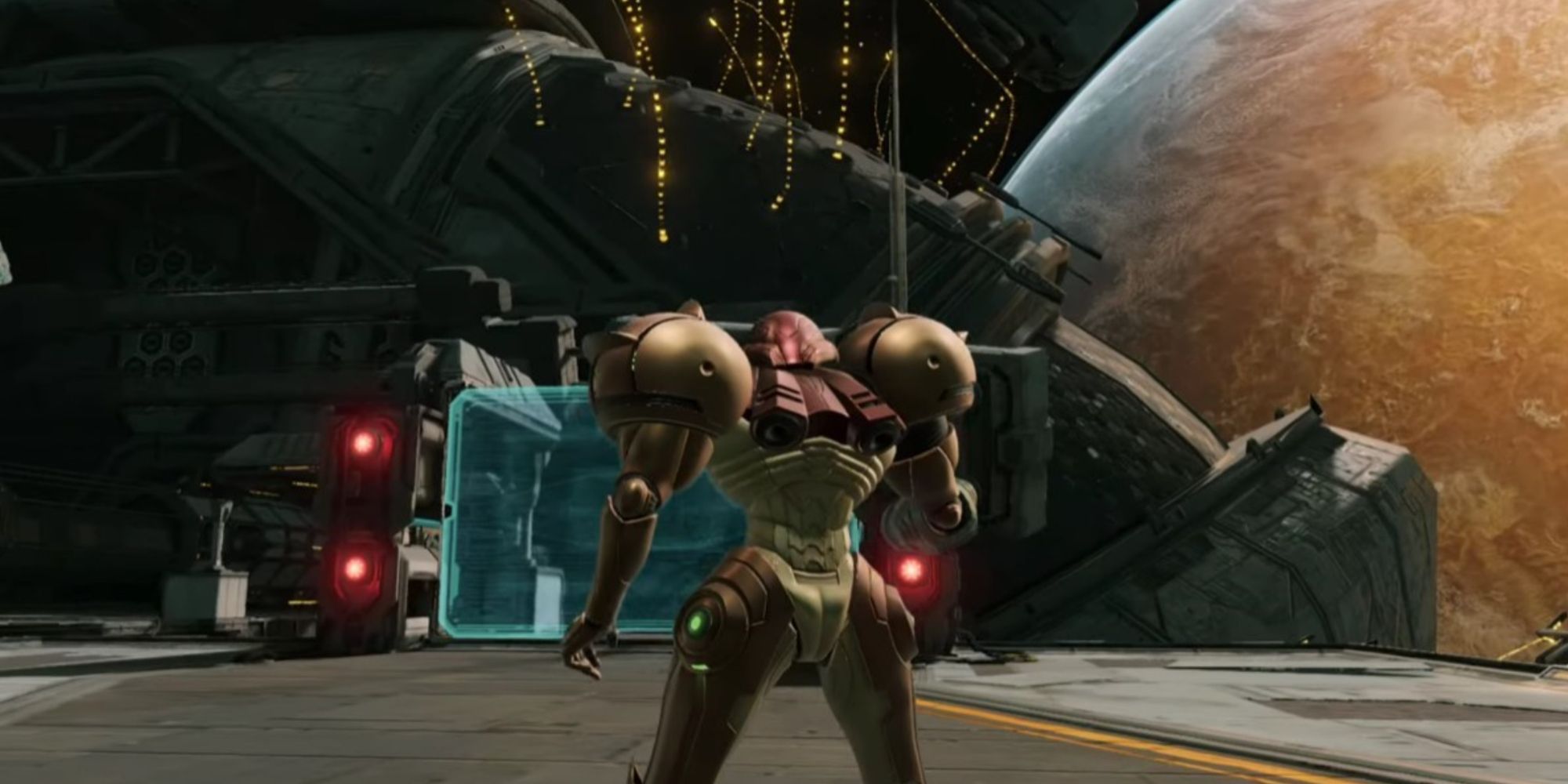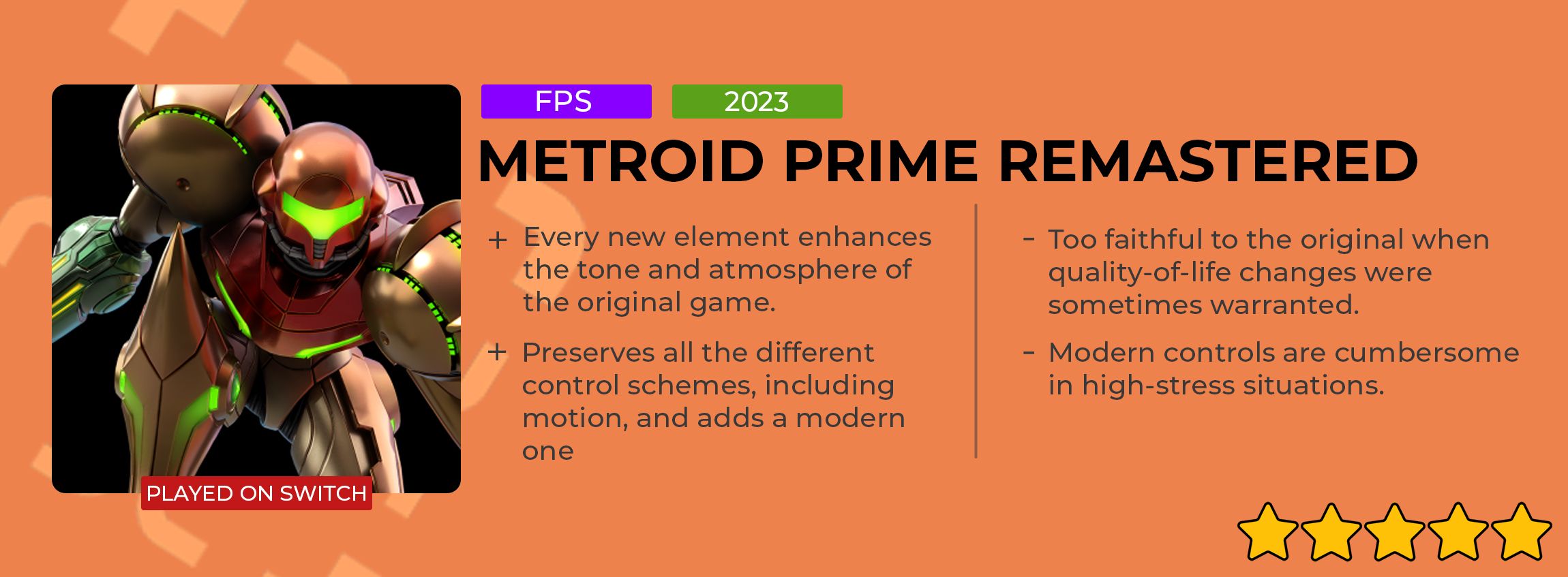Playing Metroid Prime Remastered feels like revisiting my childhood neighborhood. It’s been more than a decade since I last set foot on Tallon IV, but I still know my way around every corner. Age and time have made the precise routes fuzzy, but important details remain seared in my memory. I could close my eyes and still find the best climbing tree, the fastest hill to sled down, and the little room in the Chozo Ruins where you recover the missile launcher. Metroid Prime’s approach to environmental storytelling and complex world building give it a sense of place that’s hard to forget, even all these years later.
Retro Studios has done a masterful job refurbishing the old neighborhood. Every house on the block has a fresh paint job, the road is repaved, and even the mailboxes look brand new. It isn’t a transformation, but a restoration. Everything is exactly the way you remember it – clean and perfect and unravaged by time. The most remarkable thing about Metroid Prime is how little its design and gameplay has aged. A visual refresh was about the only modernization it needed, and that’s exactly what Retro Studios did.
I don’t want to downplay the effort that has gone into Metroid Prime Remastered. Prime was already a nearly perfect game, but the work that’s been done here elevates it in remarkable ways. The moment you step onboard the Orpheon in the opening chapter and discover the burning husk of the parasite mutant flanked by the corpses of mutilated space pirates, the depths of this remaster become clear. The thick smoke and wispy embers emanating from the flames, the reflections on Samus’ arm cannon and visor as your approach the wreckage, the way the long, sharp shadows fall off of the bodies, and all of the detail in the aliens’ new models work together to support and enhance the storytelling.
There’s an incredibly cohesive quality to the tone and aesthetic of Metroid Prime that creates a sense of atmosphere on Tallon IV. In other words, the vibes are immaculate. The Remaster adds so much texture to the world. The new models give the flora and fauna of Tallon more personality and identity, and the improved visor effects accentuate the feeling of being grounded in the world. My favorite example is when you see the reflection of Samus’ face whenever there is a bright flash in a dark room. In the original you could just barely make out her eyes, but in the Remaster you can see her full face and her expression. The remaster understands the intention behind design choices made in the original, and makes countless efforts to reinforce them whenever it can.
When it comes to the gameplay and mechanics, Retro has approached with an understandably light touch. The only notable change is the introduction of a modern ‘twin stick’ control scheme. This layout is fine, and should be easy to pick up for anyone familiar with console shooters, but it proves to be insufficient in a couple of ways. Swapping weapon types is a two-hand button combo that is cumbersome, especially in later fights that require you to swap on the fly. Similarly, the super missile button combo is frustrating to pull off and requires a three-button hold combo or pressing both right trigger buttons simultaneously, which is a violation of the video game Geneva Convention. With as much thought that went into the visual side of the Remaster, I would have liked to see a little more consideration put into the controls. I’m not sure why, for instance, you can’t just hold the missile button to charge a super missile. Luckily, Retro has also included the original GameCube layout, a hybrid motion control scheme, and a full Pointer mode that approximates the Wii motion control, which is exceptionally well done.
When remaking or remastering a beloved classic, any changes are bound to be controversial. Retro elected not to make any gameplay changes to Prime, but there are a few occasions where quality-of-life changes would have been warranted. Adjusting the map to make unopened doors more apparent and adding some context clues to help guide players towards objectives would have been nice. The hint system is still in place if you get really stuck, but that can feel like a nuclear option when all you really need is a nudge in the right direction. Adding some invisible platforms to the room where you find the X-Ray Visor would have done a lot to help players understand how to use the upgrade, for example.
Scoring a review of a remaster can sometimes be tricky. Should I evaluate the game on its own merits, or consider only what the remaster adds to the original? In this case, I don’t need to distinguish between the two. Metroid Prime is a hugely influential and important game, and the remaster enhances every one of its qualities. Not since the Spyro Reignited Trilogy have I been this impressed by a remaster – which also happens to be the best comparison to what Remastered does for Metroid Prime. This is the update that Prime deserved, and while I have my nitpicks, this is one of the most impressive remasters ever, and one of the best looking games on Nintendo Switch.
Source: Read Full Article

